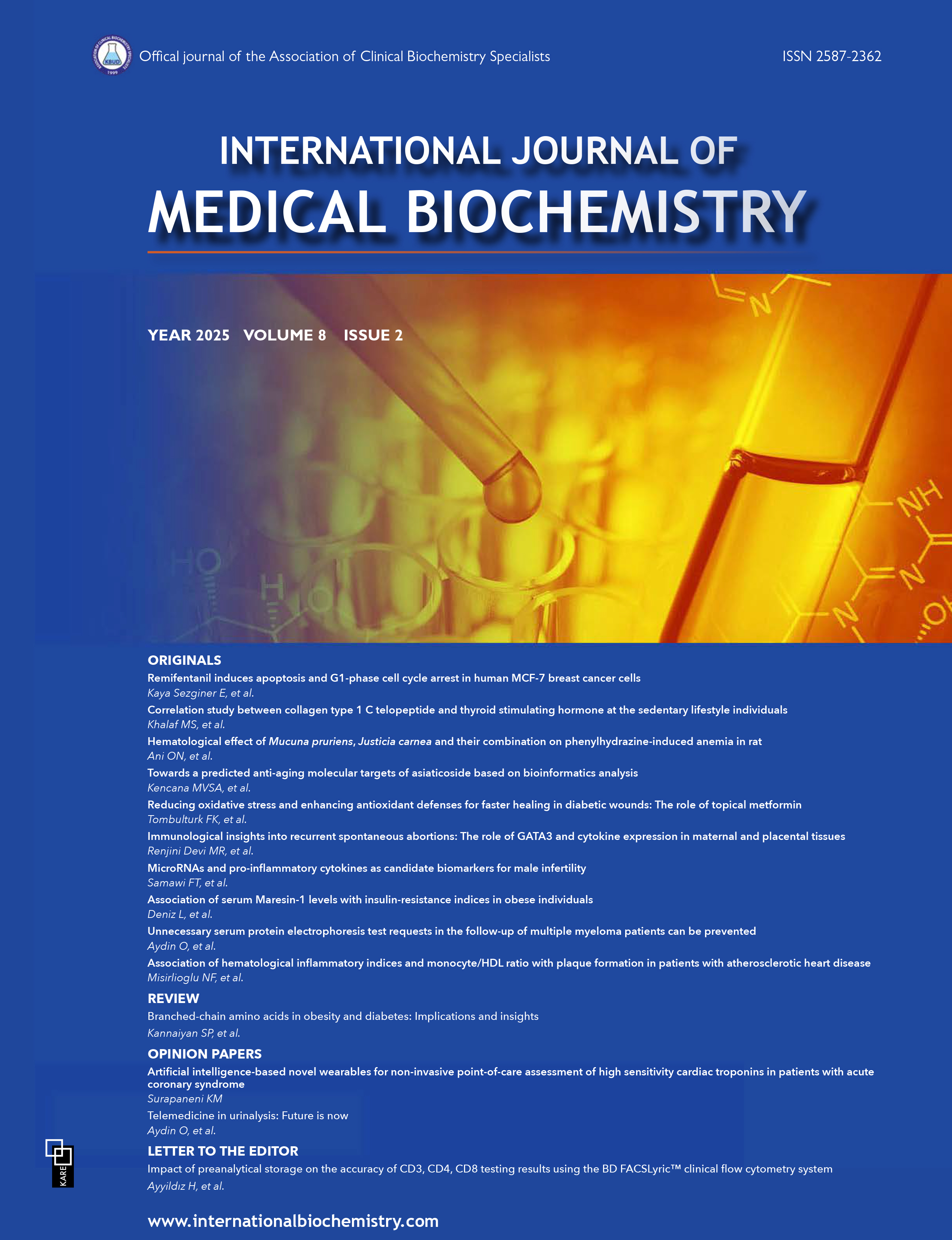Effect of dapagliflozin on oxidative stress in heart embryonic H9c2 cardiomyocytes
Zeki Doğan1, Hafize Uzun21Department of Cardiology, Istanbul Atlas University Faculty of Medicine, Istanbul, Türkiye2Department of Medical Biochemistry, Istanbul Atlas University Faculty of Medicine, Istanbul, Türkiye
INTRODUCTION: Dapagliflozin is a drug used to treat type 2 diabetes and is also used in certain heart failure and chronic kidney disease conditions. In this study, we investigated the effects of dapagliflozin (DAPA) on malondialdehyde (MDA), lipid hydroperoxide (LOOH), superoxide dismutase (SOD), total thiol (T-SH), and total antioxidant capacity (TAC) as oxidative stress parameters in heart embryonic H9c2 cardiomyocytes.
METHODS: H9c2 cardiomyocyte cells were treated with methotrexate (MTX) (10-0.160 μM) and DAPA (10-0.150 µM). The cell viability and oxidative stress parameters were measured.
RESULTS: MDA and LOOH levels were significantly lower in the control (p<0.001 for both) and DAPA groups (p<0.001; p<0.05, respectively) compared to the MTX groups, while SOD (p<0.001 for both), T-SH (p<0.001; p<0.01, respectively), and TAC (p<0.01; p<0.05, respectively) were significantly higher in the control and DAPA groups compared to the MTX groups. There was no significant difference between the control and DAPA groups in other parameters except for MDA. However, MDA levels were significantly higher in the DAPA group (p<0.05) compared to the control group. The decrease in MDA levels was significantly correlated with the increase in SOD activity (r: -0.814; p: 0.014) in the DAPA treatment group.
DISCUSSION AND CONCLUSION: Cell viability increased, and the levels of MDA and LOOH decreased, while the SOD, T-SH, and TAC levels increased in H9c2 cardiomyocytes induced by oxidative stress. The findings obtained in this study suggest that DAPA may have beneficial effects in cardiomyopathy caused by oxidative stress.
Manuscript Language: English






